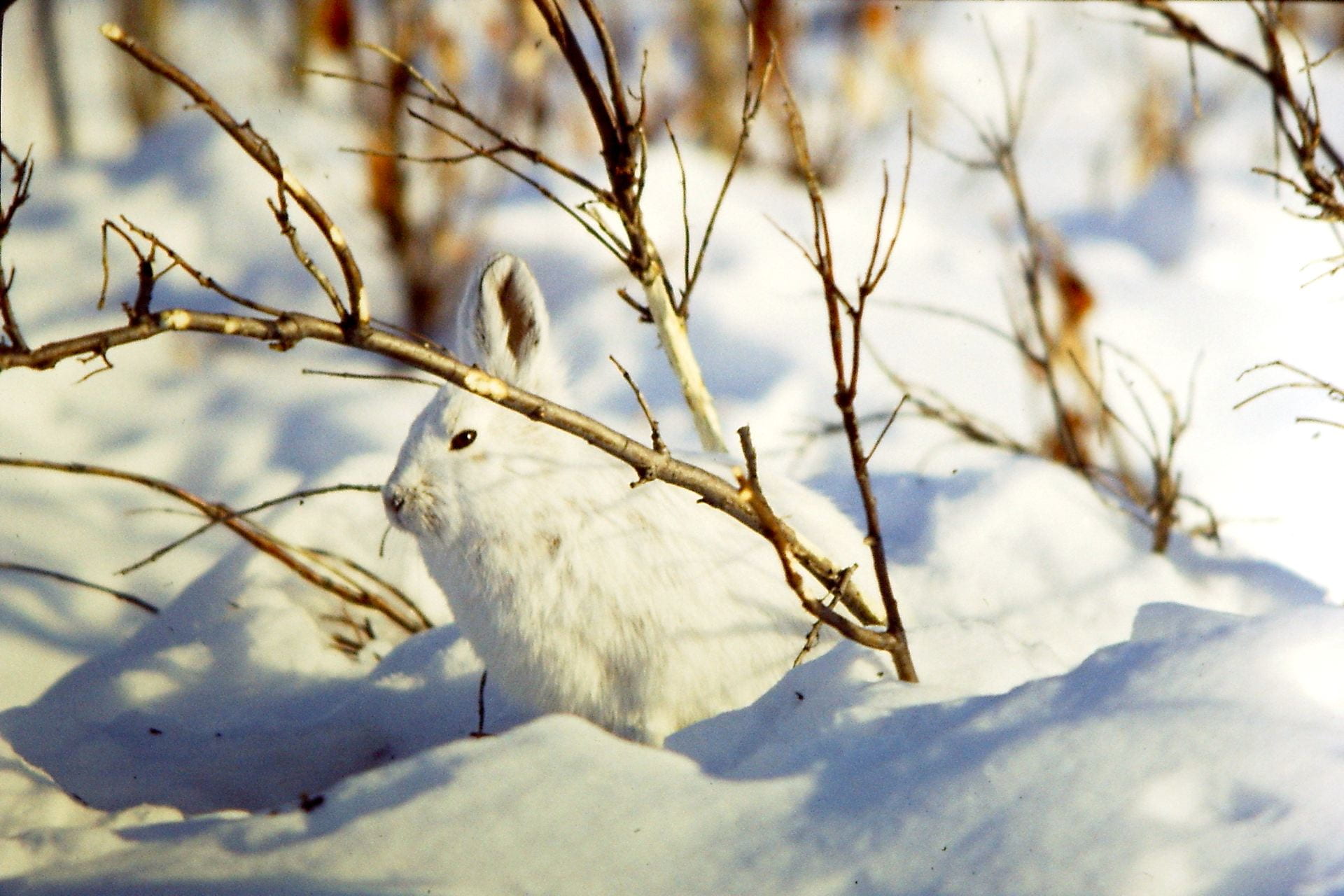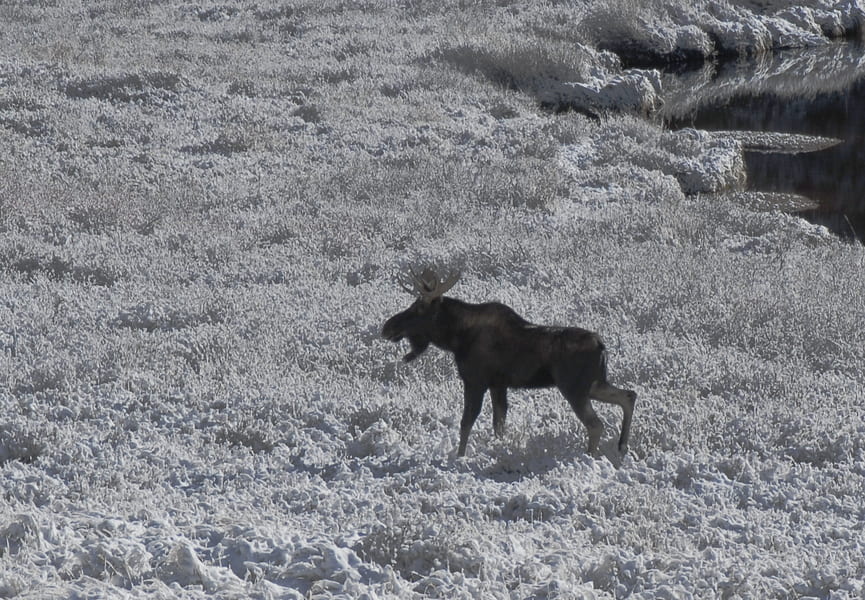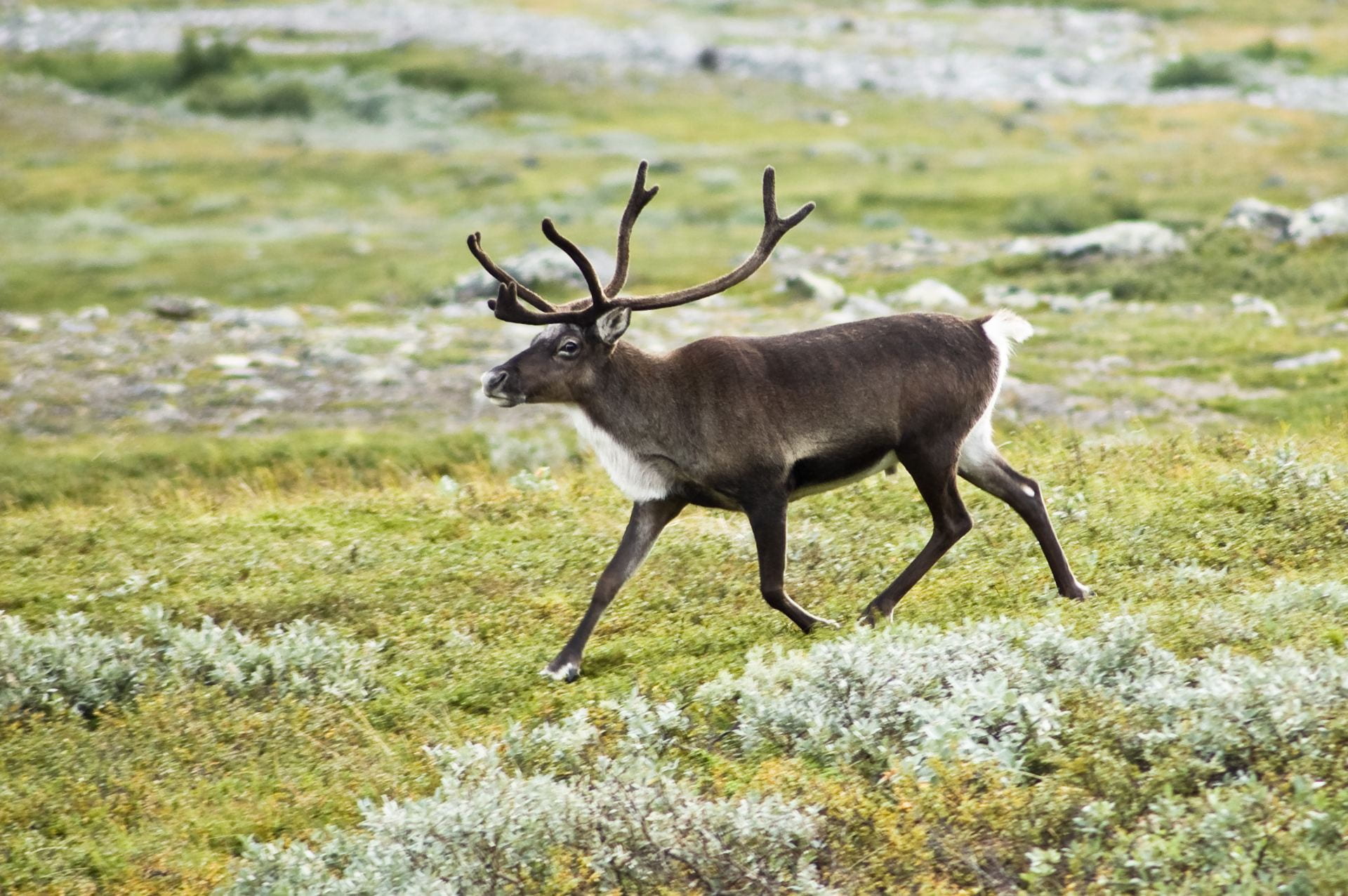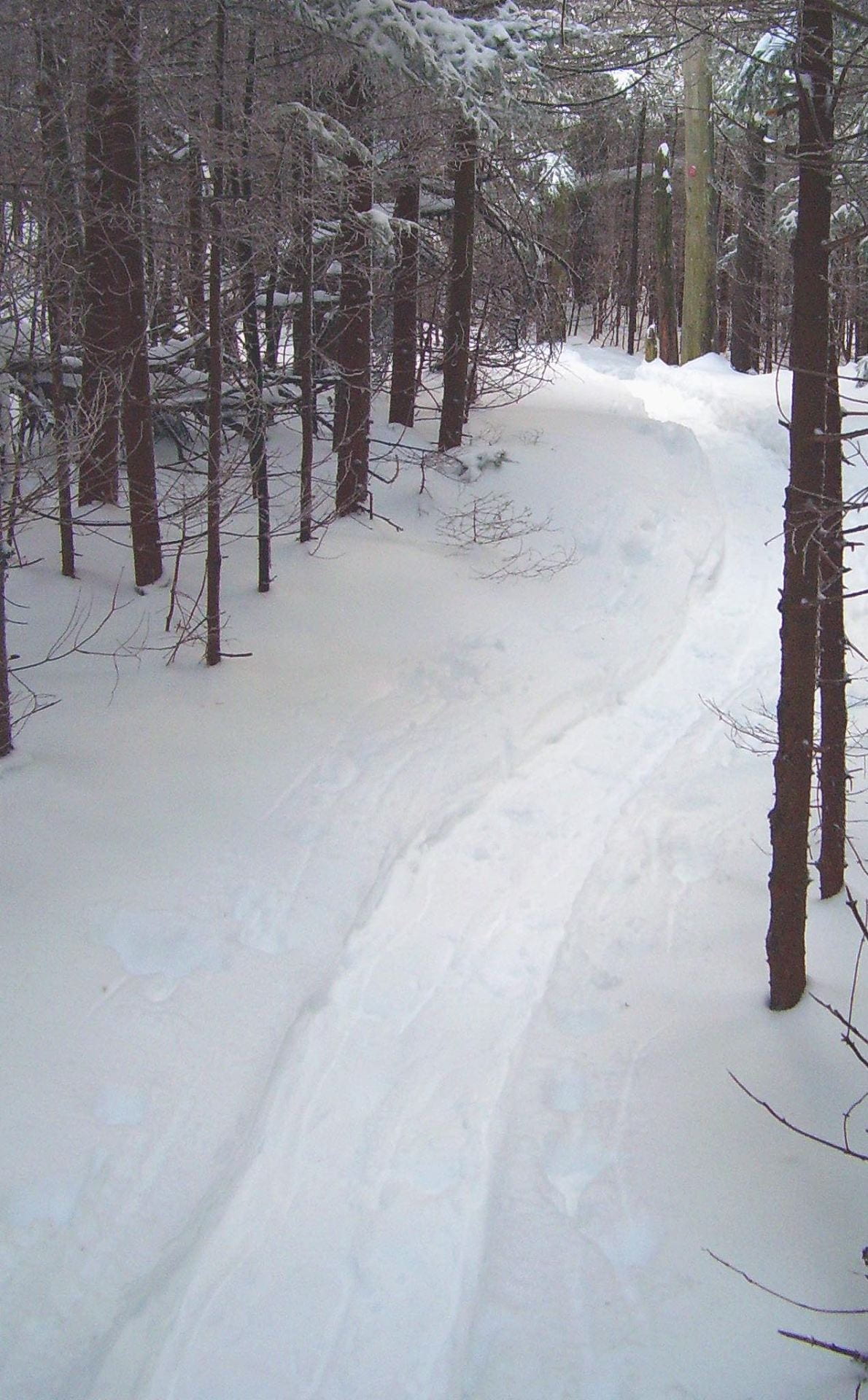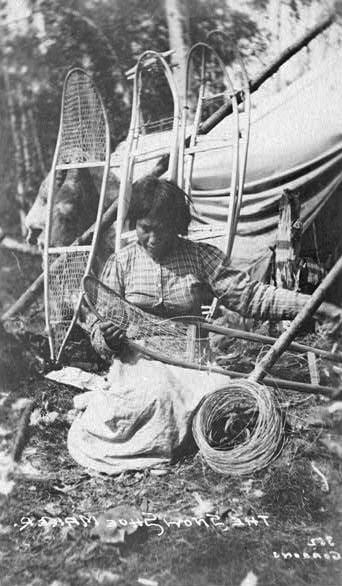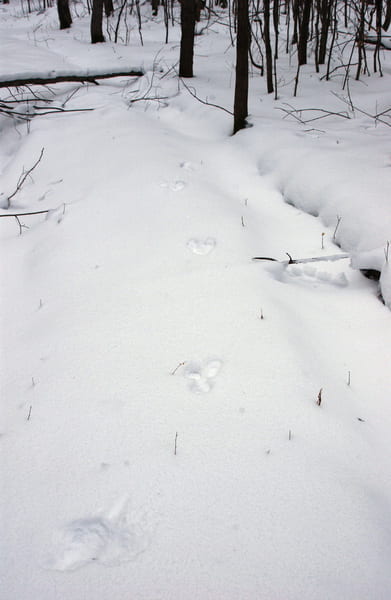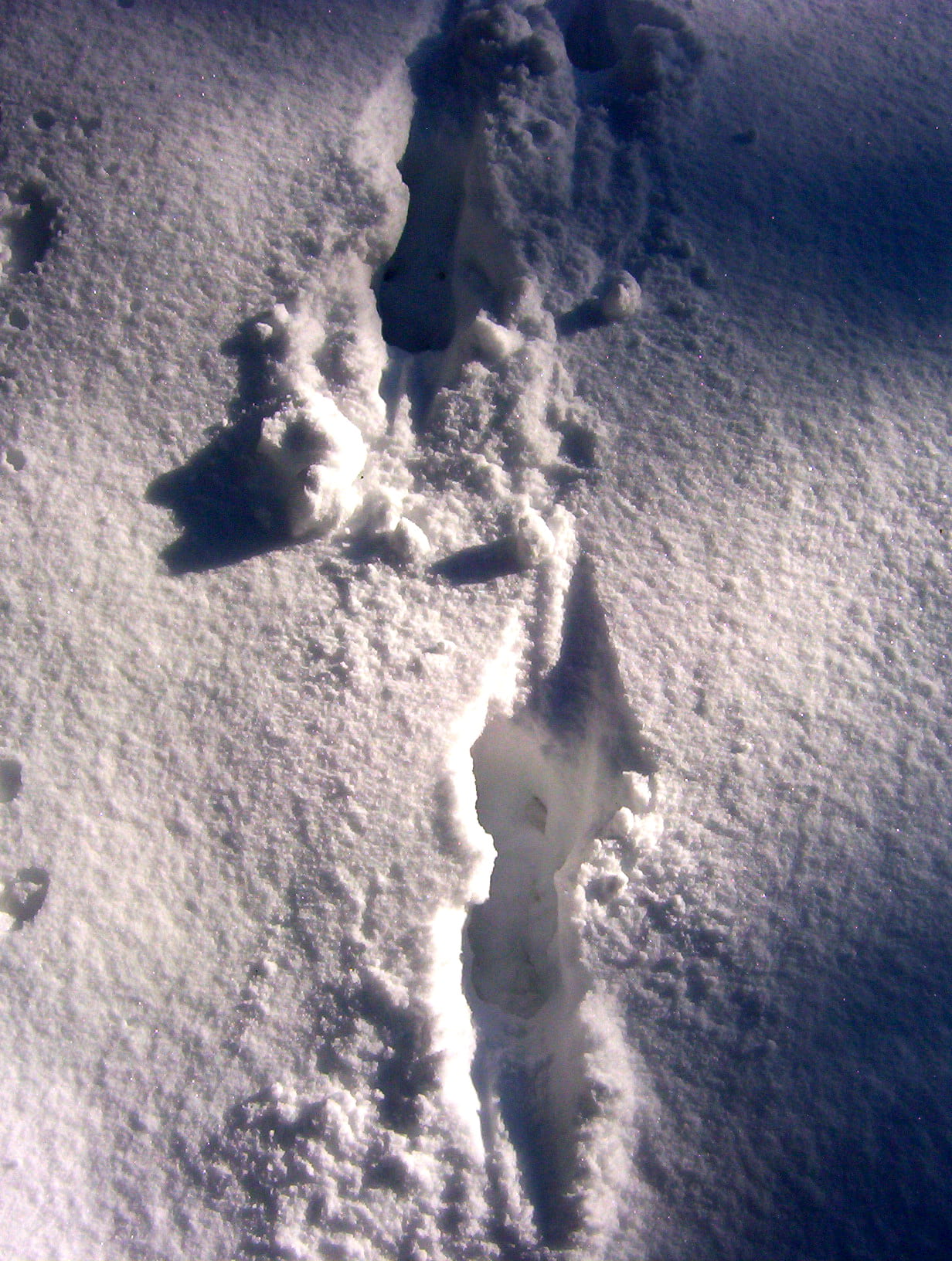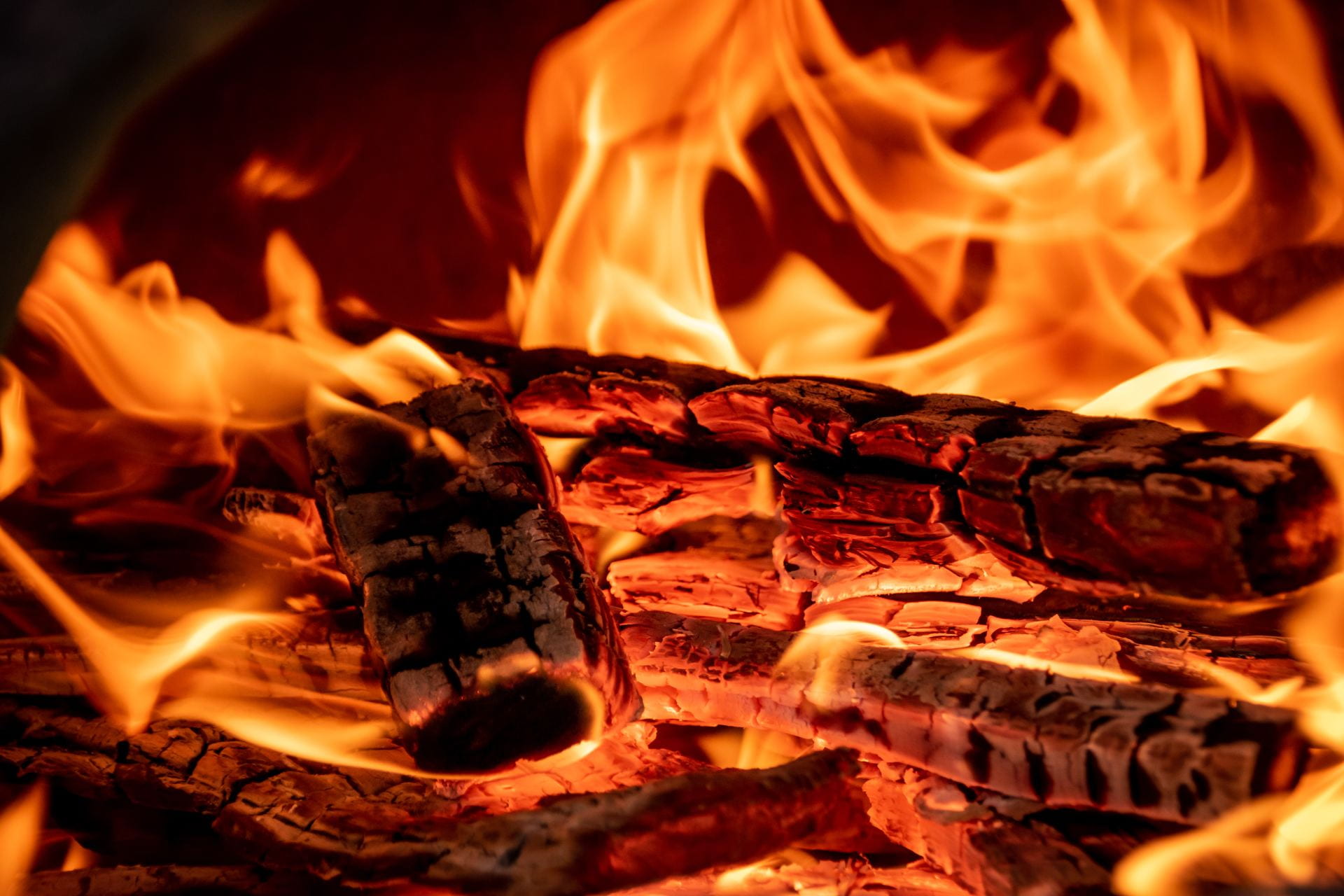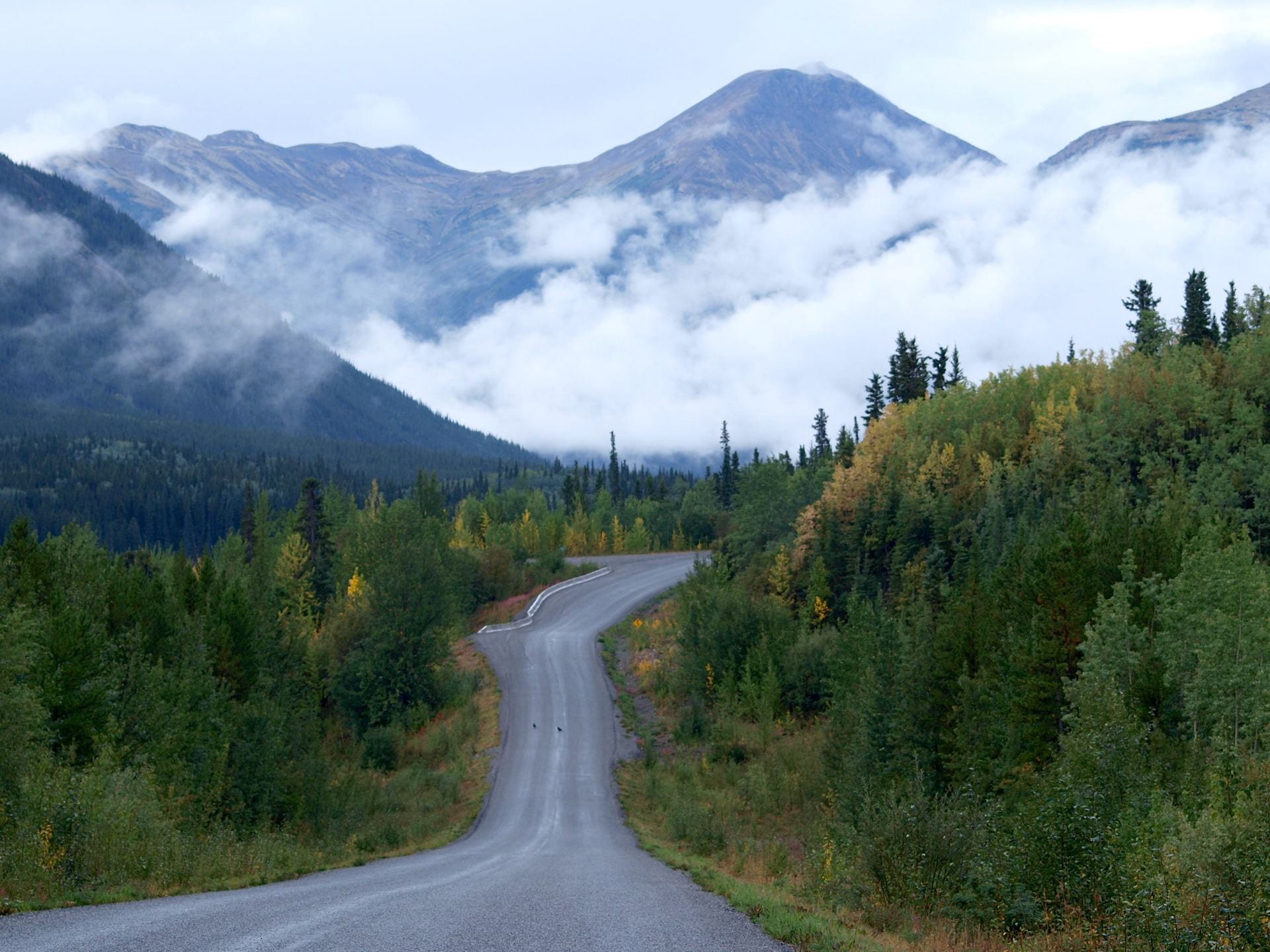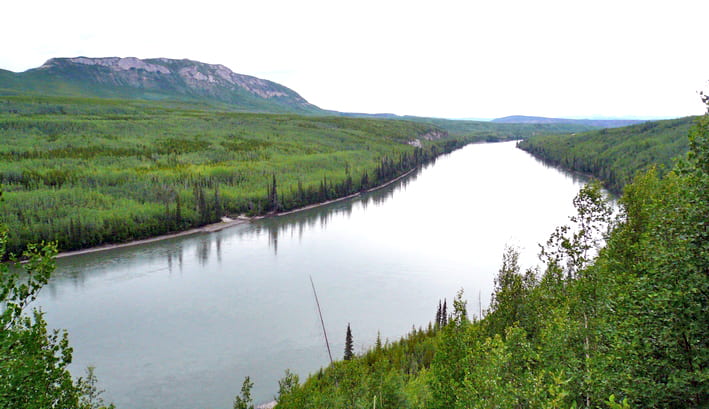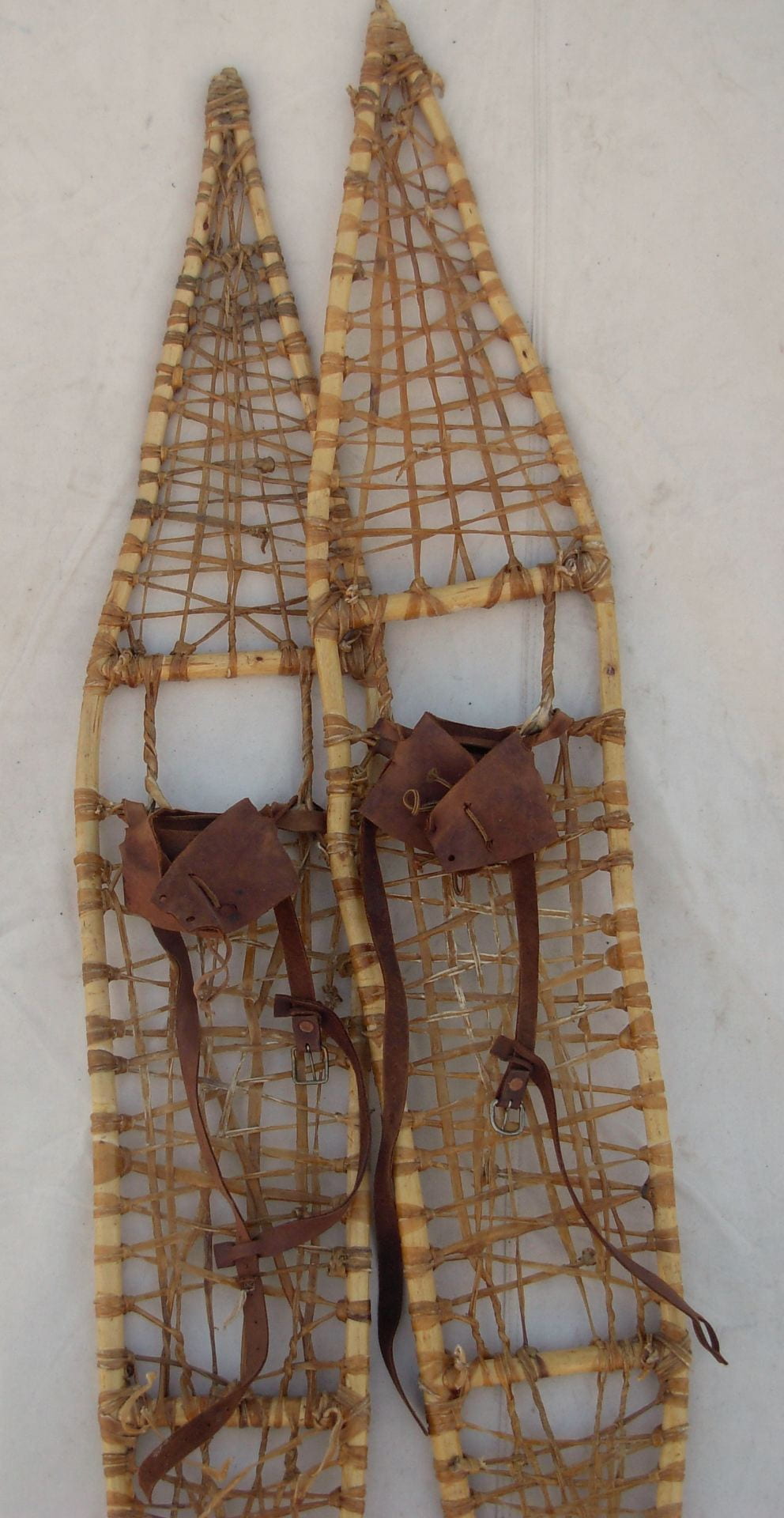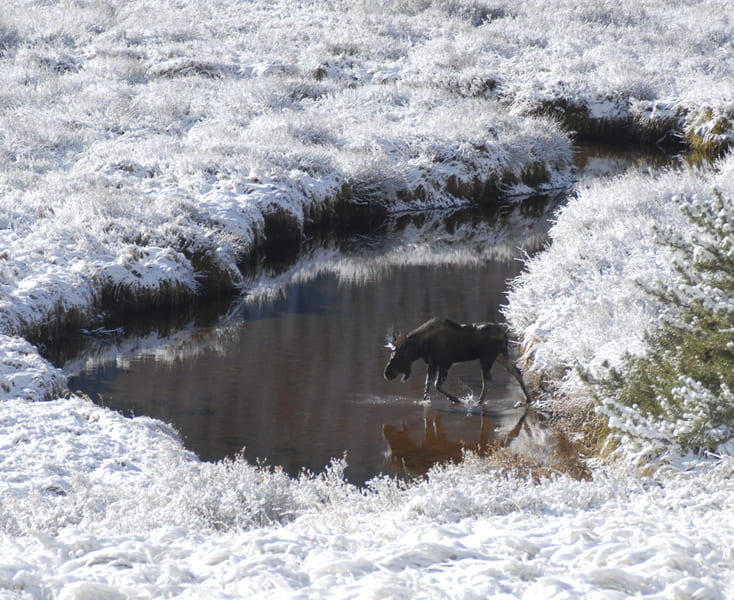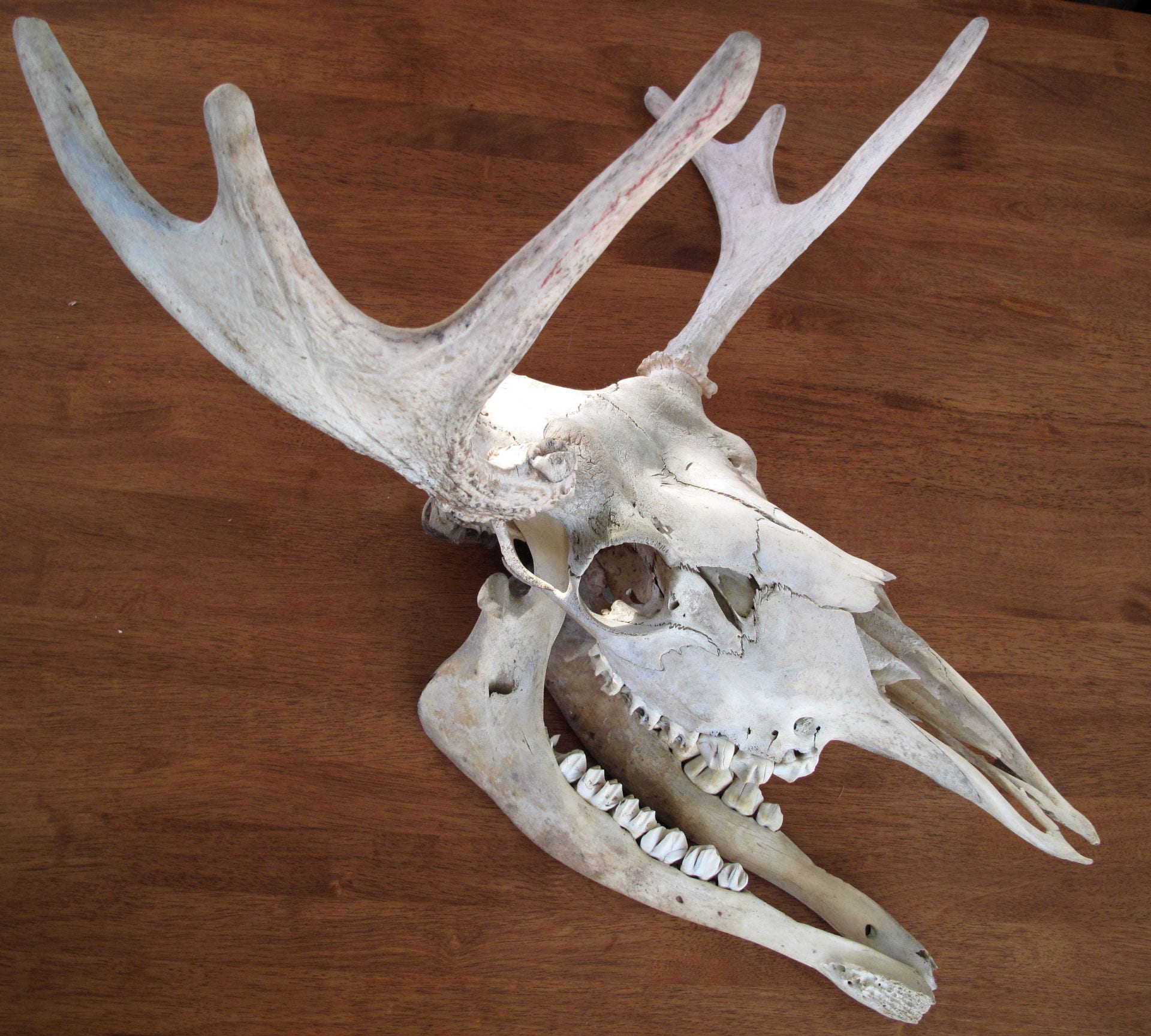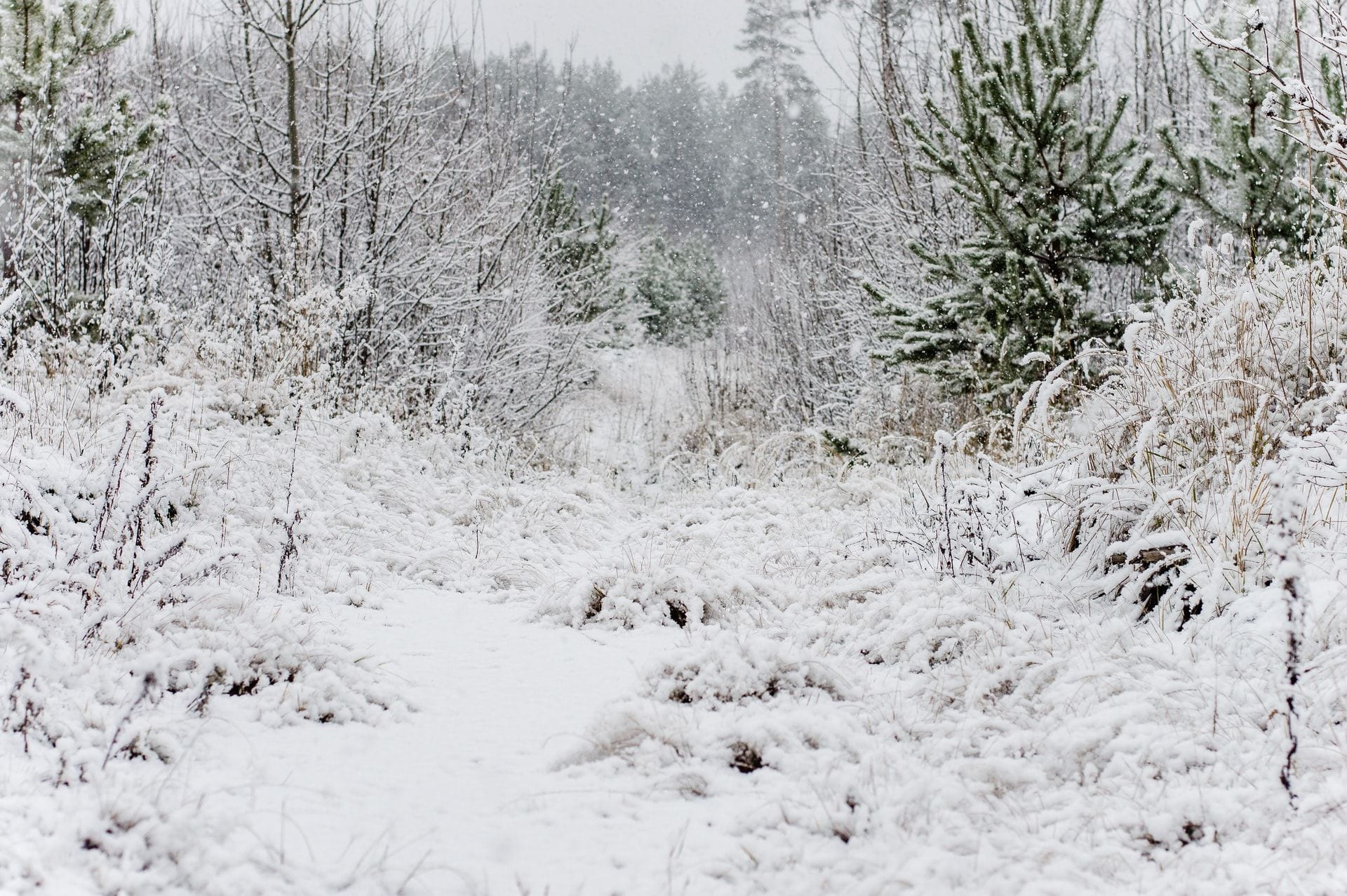“The Deserted Woman”
Culture: Kaska Dena | Narrator: Unidentified | Source: Teit (1917:455)
Entry by Sarah Walsh & Michelle Scalise Sugiyama
Story
A man and his wife were travelling with other people. The woman had a heavy load, and was following behind. She came to a hill where the people had slid down with their toboggans on the snow. Here she found a ball of fat which must have been lost from one of the toboggans. When she reached camp, she showed the fat to her husband. He became angry, and accused her of having a sweetheart, which she denied. He said, “Your sweetheart must have paid you in fat.” (This is why some married people are now suspicious of each other, and accuse each other of infidelity without sufficient reason.) In the morning the husband burned his wife’s clothes and tools, the people extinguished the fires, and all of them deserted the place, leaving the woman to die of cold and starvation. Only her sister-in-law had pity on her, and told her she had left a little fire for her in one place.
As soon as the people were out of sight, the woman blew on the embers left by her sister-in-law, and made a small fire. Numbers of rabbits began to come to the deserted camp. She found some scraps of sinew at a place where the men had been making arrows. She made a snare with these, and caught a rabbit. She took the sinews of its legs and made another snare. Thus she continued catching and living on rabbits. She made needles and awls of their bones, thread of their sinews, and clothing and blankets of their skins. She took great care not to let the fire go out, as she had no axe or any tools for making fire. She collected whatever fire-wood she could find. She had no snowshoes, and could not go very far, for the snow was deep in that place.
At last March came, and spring was near. There was a hard, thick crust on the snow. One day she tapped on her knee, and said, ” I wish some of you people would come this way!” She said this almost with- out thinking, as if in fun. Soon afterwards a moose ran past the camp, and a man on snowshoes in pursuit on the crust. Seeing the moose had passed near the camp, the man asked the woman how long since it has passed or how far ahead it was. She pointed out to him the branches of a tree still moving which it had touched in passing, and made a sign that it had just gone out of sight. The man went on, after telling her that his brother was following and would camp there that night. The brother came along, following the tracks, and, seeing the camp, left his blankets there with the woman. The first brother killed the moose, and that night both brothers returned to the woman’s camp heavily laden with moose-meat. They cooked meat and gave some of it to the woman. During the course of the evening they asked the woman why she was alone, and why she wore only rabbit- skin clothing, and she told them all. They said, “When we return to our camp, we shall tell our mother.” They told their mother, who said, “I am almost blind now, and I am very glad you have found this woman. She will be a wife for you, and will sew your clothes.” They took the woman to wife, and she made for them fancy clothes of moose and caribou skin, embroidered richly with quill-work, and feather head-dresses. (This is why men are now jealous of a good wife, who looks after them well and makes fancy clothes for them.) She also made good clothes for herself. (This is why men now like a woman who dresses neatly and well.)
The woman stayed with her husbands and mother-in-law in one place. After a time her former husband arrived, and, finding tracks, he followed them to the camp. He was surprised to find his former wife there, finely dressed, well provided with meat, and having two husbands. He offered to buy her back with a stone axe and arrows. The woman took the axe and threw it into deep water, and threw the arrows into the fire. She said to him, “Don’t you remember how you left me to starve? I shall never go with you now!” He departed crying. (This is why, when a good woman separates from a bad man, she becomes better off, and never returns to him.)
Traditional Ecological Knowledge
Zoology
This story contains information about rabbit behavior. Because the story is set in winter, the observation that large numbers of rabbits came to the deserted camp tells us that rabbits do not hibernate or migrate, and that they forage near human settlements. The story also identifies several purposes that rabbits are good for: food, snares, needles, awls, clothing, and blankets. The information that “numbers of rabbits” began coming to camp, and that the woman “continued catching” them until early spring implies that they are an abundant and reliable winter resource, and easy to catch. This information is useful because it identifies a resource that can keep people alive in winter if they do not have access to weapons or snowshoes.
The story indicates that moose, too, are active and available in late winter, even when there is a hard, thick crust on the snow. It also indicates that moose and caribou skin are good for making clothing. The characterization of this clothing as “fancy,” in contrast to the men’s puzzlement over why the woman wore “only” rabbit-skin clothing, implies that moose and caribou hide are better suited for apparel than rabbit skin.
Snowshoe hare (Lepus americanus) | Photo by Karl Friedrich Herhold
American moose (Alces americanus) | Photo by Phil Myers
Caribou (Rangifer tarandus) | Photo by Alexandre Buisse
Snowshoe trail | Photo by Daniel Case
Physical Geography
This story provides information about climate, noting that the snow is deep and that the woman could not travel far for firewood because she lacked snowshoes. The story also mentions that, in late winter, a hard thick crust formed on top of the snow, and that the man pursuing the moose was wearing snowshoes. These observations indicate that winter weather makes travel difficult or impossible without the right footwear. The story also notes that the woman took great care not to let her fire go out because she had no means of making fire, and that she made herself blankets from rabbit skins. This information implies that the cold is severe, as does the comment that the people left the woman “to die of cold and starvation.” The story thus warms people that survival in winter is difficult without adequate preparation.
Cultural Geography
This story informs listeners about gender roles and social norms having to do with marriage. The comment that married people “accuse each other of infidelity without sufficient reason” implies that it is wrong to be suspicious of one’s spouse without good cause, and that it was wrong of the man to abandon his wife. This is reiterated at the end of the story, when it is implied that the first husband is “a bad man.” The comment that a good wife “makes fancy clothes” for her husband indicates the economic role that women are expected to perform. The comment that men “like a woman who dresses neatly and well” points to a cue of a woman’s sewing skill and industriousness, and implies that this is an important consideration when choosing a marriage partner. The story also indicates the economic role that men are expected to perform by noting that the woman has been “well-provided with meat” by her new husbands. This message is reiterated when the woman scolds her former husband: “Don’t you remember how you left me to starve?” By contrasting an unsuccessful marriage with a successful one, the story shows that husbands and wives depend on each other’s labor for survival, and that it is in their interest to trust each other.
The challenges faced by the deserted wife reinforce the message that survival on one’s own is difficult in this environment. This underscores the importance of getting along with others, and the foolishness of the husband’s unwarranted jealousy. The woman’s lack of tools highlights the importance of being prepared for emergencies. The measures she takes and her positive attitude model the values of resourcefulness and perseverance in times of crisis.
Technology
This story indicates that snares and thread can be made from rabbit sinew, needles and awls can be made from rabbit bones, clothing can be made from rabbit, moose, and caribou skins, and axes can be made from stone. It also identifies two hunting techniques: snares for catching rabbits, and snowshoes for pursuing moose when the snow is deep and crusty. It also notes an ecological cue useful for tracking moose: moving tree branches brushed by the animal in passing.
The story also contains information about fire making. The narrator notes that the woman could not make fire because she lacked an axe, indicating that an axe blade can be used to strike sparks. The description of her blowing on embers identifies an alternative way of making fire. The comment that she took care not to let the fire go out indicates that fire must be tended vigilantly, and points to the importance of having fire-making tools. This information, along with references to her scavenging for sinew and to her lack of snowshoes, provides a list of items that are essential for survival in the region.
The Land and The People
Cassiar Mountains near Good Hope Lake, a Kaska Dena community | Photo by Bruce McKay
Liard River | Photo by David Adamec
The Kaska Dena traditionally lived on the Yukon Plateau along the Dease and Liard Rivers, located in what are now northern British Columbia and the southern Yukon Territory. This region is bordered by the Rocky Mountains on the east and the Coast Range on the west. The Kaska Dena speak a Northern Athapaskan language, as do their closely related neighbors, the Tahltan. The name “Dena” is an autonym, meaning “human beings”; the name “Kaska” is an exonym whose meaning and origin are obscure. The size of Kaska Dena settlements varied over the year as families moved camp in search of seasonal foods. In the warmer months, people lived in simple shelters such as lean-tos; in winter, they lived in semi-permanent, conical dwellings that could accommodate up to twenty individuals.
Summers in the region are mild but short, with frosts beginning in August. Winters are long and harsh: snowfall is heavy, lasting from September to June, and temperatures commonly drop to 50 degrees or more below zero. Travel under these conditions was virtually impossible without snowshoes, which were also used to shovel snow and for trail breaking. Their importance is reflected in a Kaska Dena origin story which warns, “In the beginning people couldn’t walk as they had no snowshoes” (Honigmann 1954:47), and goes on to describe how to make them. Fire was essential to survival as well, and both sexes were trained in the use of the percussion method. Fires were banked at night with earth or ashes to make them last until morning, when they were revived by blowing on the embers. When people traveled in winter they carried embers in bark containers, or women swung burning sticks of rotten wood as they walked. To prepare themselves for the rigors of hunting in this climate, boys underwent training exercises–such as plunging themselves into icy water–to develop pain and cold tolerance.
Snowshoes with rawhide webbing | Photo by Jonathunder
“in late winter men depended on deep and crusted snow to help them secure game. The snow impeded the travel of moose and caribou so that the lighter hunter . . . with snowshoes could readily run them down.”
–Honigmann (1964:42)
The Kaska Dena depended on hunting, trapping, fishing, and gathering for their subsistence. Women did the bulk of the gathering, while hunting fell to men. Moose were primarily hunted in winter, when deep snow slowed their travel and made them easier to catch. Caribou were hunted using various methods (e.g., decoys, snares, game drives), depending on the time of year. Rabbits were taken year-round.
Because weather conditions limited mobility, trapping was the most efficient means of catching game. Rabbit snares, for example, could be set in about five minutes. Only men trapped larger prey such as caribou and moose, but both sexes set snares for lynx, beaver, and marmots. Rabbits were snared mostly by women and boys. When the snow became deep, people would travel to lakes, where they subsisted largely on fish until the break-up of river ice in spring. Both sexes participated in fishing.
Photo by Phil Myers
Moose skull | Photo by Matthieu Deuté
The animals referenced in this story provided the Kaska Dena with many of the necessities of life. Rabbit sinews were used for snares, their hide was plaited for cordage, and their skins were used for robes. Clothing, footwear, and babiche (rawhide) were made from caribou and moose hide, the latter of which was also used to make boats. Bone and horn of caribou and moose were used for clubs, scrapers, adzes, ice chisels, arrow points, and spear blades and tines. Moose stomach was used as a cooking container.
Winter was often a time of scarcity. Because fishing periodically failed, the Kaska Dena supplemented their winter diet with game caught in the fall and preserved for later use by drying or freezing. If fall hunting was poor, these reserves were quickly exhausted. As a last resort, people attempted to locate other bands in hope that they would have food to spare.
Photo by Daniel Spase on Unsplash
Inuit caribou-hide parka | Photo by Leoboudv
Often, several families traveled together when moving camp. When traveling, women were in charge of children and household goods, and hauled heavier loads than men. Men walked ahead, breaking trail, hunting, and preparing wood before the women arrived in camp. Women played a vital role in Kaska Dena economy. One of their most important tasks was tanning. Processing moose and caribou hides was particularly laborious, involving several rounds of scraping, soaking, washing, wringing, and drying, followed by stretching, smoking, and softening. Women were also responsible for preserving meat, and for making babiche (rawhide), which was essential for snaring, sewing, and snowshoe netting. And, as in many Arctic and sub-Arctic cultures, women made all clothing and footwear. Although marriage was expected to be permanent, and couples were encouraged to resolve their differences, divorce was common. Polygyny and polyandry occurred, but were rare.
Map
The Kaska Dena made their home along the Dease and Liard Rivers, located on the Yukon Plateau in what are now northern British Columbia and the southern Yukon Territory.
References
Bartalucci, A. & Weinstein, B. (2000). “Alces americanus.” (On-line), Animal Diversity Web. Accessed December 2020 at https://animaldiversity.org/acounts/Alces_americanus/.
Honigmann, J. (1949). Culture and ethos of Kaska society. New Haven: Yale University Press.
Honigmann, J. (1954). The Kaska Indians: An ethnographic reconstruction. New Haven: Yale University Press.
Honigmann, J. (1956). Are there Nahani Indians? Anthropologica, 3, 35-38.
Honigmann, J. (1981). Kaska. In J. Helm (Ed.), Handbook of North American Indians, Vol. 6: Subarctic (pp. 442-450). Washington, D. C.: Smithsonian Institution.
Shefferly, N. (2007). “Lepus americanus.” (On-line), Animal Diversity Web. Accessed December 2020 at https://animaldiversity/org/accounts/Lepus_americanus/.
Teit, J. A. (1917). Kaska tales. Journal of American Folklore, 30(118), 427-473.
